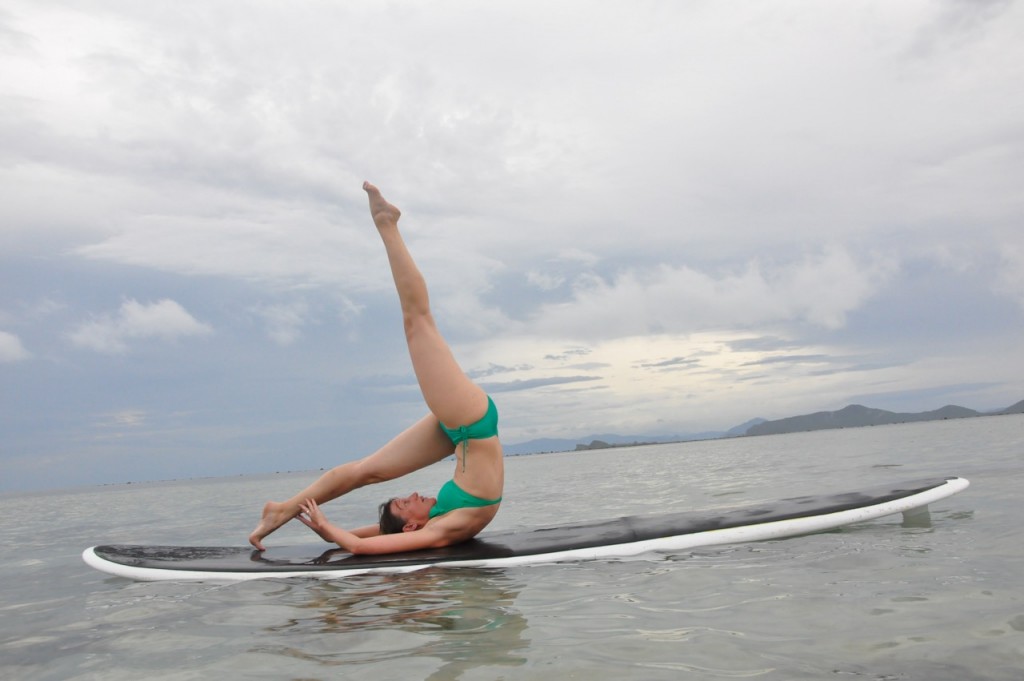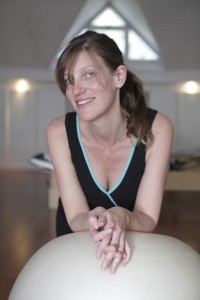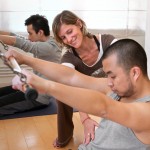All Roads lead to the Core
By Mareile Paley
When I read Tracy Maurstad’s recent Pilates Intel article on ‘turning classical’, it struck a chord. Someone had written my story – just backwards. And since we know that Pilates Intel readers love to hear multiple angles on any given subject, I decided to share my story here.
Unlike many who discover Pilates through dance or rehabilitation, I discovered Pilates in 2004 as a healthy 30-year old looking for a fun and challenging exercise activity. After my first private class, I was hooked. I practiced religiously once a week during my lunchtime break, twice if I had the time, all the way through my first pregnancy. When I reemerged into the real world (after 3 sleepless months of breastfeeding and cocooning) ready to start my Pilates practice again, I found to my great disappointment that my Pilates studio had closed!
Back then (2006), there were very few Pilates studios in Hong Kong (where I lived at the time). So, during a day of internet searching, instead of finding a new studio, I found a Pilates Teacher Training – in Hong Kong! Why not, I thought… that could be cool and, after some serious consideration (about 2 hours and a quick convincing pep talk to my husband), I signed up for the training. I can’t claim I made an informed decision or opted for a classical training by choice. It just so happened that the training I found was of the classical type (one of the first international CTTCs offered by Core Pilates NYC).
As for the training itself (mind you it was 10 years ago!), it is mostly a jumbled set of memories: me sobbing in the toilet with a splitting headache, me during my first apprentice teaching class praying that people won’t notice that I have no clue what I am talking about, …. It was a tough and intense training lasting (in my case) more than a year – while I was working a full-time job with a 1-year old at home (which was a 1-hour commute to and from the studio). And, despite being a passionate practitioner, I had no movement background whatsoever. I was a Graphic Designer and an Art Director – I worked with computers, not with bodies. I did not speak in anatomical terms. Needless to say it was all a bit overwhelming at times.
 For someone like me (new to teaching, new to anatomy, shy to improvise), the Classical Training was perfect. The teachers kept on reminding us of Joseph Pilates’ famous words: “One hour, hit ‘ze shower”, which they translated into: “Get them in, get them moving, get them out” (the clients, that is). I learned a set of exercises, their names, their purpose and a strict order to teach them in. Those early days of my Pilates career were not about analyzing each exercise or client, nor were they about muscle groups or physical and mental considerations. There was a certain drill to it. Learn the moves. Follow the order. Understand the underlying reasons for the order. Like learning to play the notes and read music from a chart before you start improvising. I like clear rules and direction (might be the German in me ). It gave me a strong foundation, sort of my backbone to Pilates.
For someone like me (new to teaching, new to anatomy, shy to improvise), the Classical Training was perfect. The teachers kept on reminding us of Joseph Pilates’ famous words: “One hour, hit ‘ze shower”, which they translated into: “Get them in, get them moving, get them out” (the clients, that is). I learned a set of exercises, their names, their purpose and a strict order to teach them in. Those early days of my Pilates career were not about analyzing each exercise or client, nor were they about muscle groups or physical and mental considerations. There was a certain drill to it. Learn the moves. Follow the order. Understand the underlying reasons for the order. Like learning to play the notes and read music from a chart before you start improvising. I like clear rules and direction (might be the German in me ). It gave me a strong foundation, sort of my backbone to Pilates.
Besides the classroom modules, the program also required weekly homework and 4 (I kid you not!) practical exams, at the 100-hr, 200-hr, 300-hr and 400-hr marks, the last of which provided a ‘fun’ challenge where we had to teach a beginner and an advanced client at the same time. We were terrified and screamed, “But this will never happen in real life!” Oh yeah? I also made some barter arrangements for private sessions with the studio owner. I learned so much during those extra sessions – about my own body (i.e., I had no core and very long legs, which can be a futile and frustrating combination), about all of the exercises we had covered in the official training modules and how much you can actually do even within the seemingly narrow scope of same exercises, same order.
Fast forward a few years and I have now moved to Turkey. I started Pilates Retreat Asia and have my own small studio with mostly private clients. I still don’t speak anatomy, but I do know a tight quadratus lumborum when I see one. The classical order of exercises is still there, somewhere ingrained in the Pilates part of my brain, but I don’t stick to it that strictly anymore – I rely on my own experiences, intuition, and influences from colleagues and workshops. Some clients simply can’t deal with doing the same thing over and over again. Other clients have issues and conditions that need to be addressed that seem more important than ‘the order’. The classical exercises are still there, but the melody had taken on its own variations.
Teaching wise, I felt in a good place, but I also felt that is was time to be a student again; to see why and how other schools might have adopted or adapted Joseph Pilates’ original methods.
Wiser and more informed, I also knew where I wanted to go. The BASI block-system had always intrigued me and two of my favorite Pilates teachers were also BASI teacher trainers. When fate brought both of those teachers to Istanbul, the decision was made. After another quick and convincing pep talk to my husband (who would now have to babysit 2 children), the matter was sealed and the deposit paid. After 8 years of teaching, I was doing it all over again! And I could not wait!
What really worked for me was that BASI provided a solid underlying structure, but with more pieces to chose from. I could add variety with purpose to my class design and it really enhanced and enforced the teaching path I had already taken naturally. I also took in this second teacher training as a completely different person – older (maybe wiser even), more experienced, more confident. I could listen and try to understand subtle details that would have been lost to me as a budding teacher 12 years ago. I also do believe that we must be open to change and new ideas and not shy away from changing our (once so convincingly argued) opinions. I still teach the actual exercises with a very classical approach, but I dare to be creative in their application. And thanks to that original drill, whenever I have a bad teaching day, where my mind gets distracted and I think of picking up the kids from school and what to cook for dinner before I snap back and realize I’m actually teaching a Pilates class (come on, we all have days like that, don’t we?), I can pick up at any exercise and jump right back into the original classical order until I got my groove back.
Just like Tracy, going back to school has made me a better teacher and just like Tracy, I urge you to seek out those with in-depth knowledge of Joseph Pilates’ original work and go study with them. No matter what path you choose in the end, as Pilates teachers, we have an obligation to know and understand the origins of what we teach.
P.S. Share your knowledge with your clients. If they ever move, switch studios (god forbid!) or take Pilates classes with Siri Galliano , they will appreciate that they know terms like ‘The Hundred” and “Open Leg Rocker”. They will never call it “Pie-lattes” again and they will be proud to explain to their spouses and friends that Pilates is an exercise method developed almost 100 years ago.
 Mareile Paley runs her retreat business Pilates Retreat Asia from a small seaside village in Turkey and welcomes all teachers and students of Pilates to her home for classes, workshops, retreats, exchange and new inputs. Starting in November 2016, she is offering an intensive Mat Pilates Teacher Training in retreat style format and is welcoming guest lecturers to the program. Contact her directly to find out more.
Mareile Paley runs her retreat business Pilates Retreat Asia from a small seaside village in Turkey and welcomes all teachers and students of Pilates to her home for classes, workshops, retreats, exchange and new inputs. Starting in November 2016, she is offering an intensive Mat Pilates Teacher Training in retreat style format and is welcoming guest lecturers to the program. Contact her directly to find out more.

